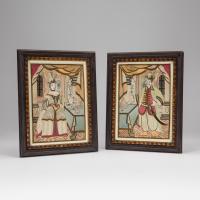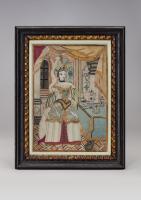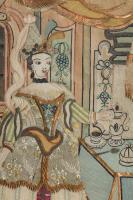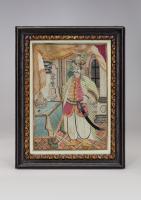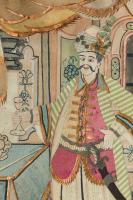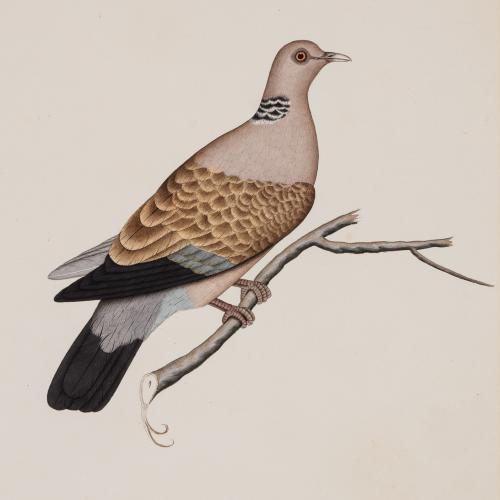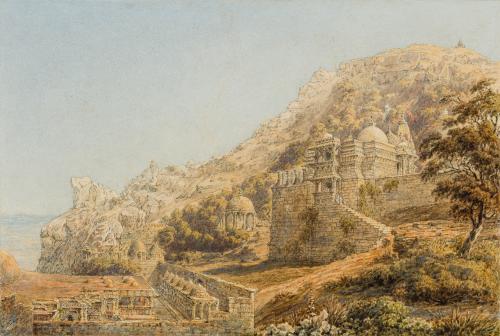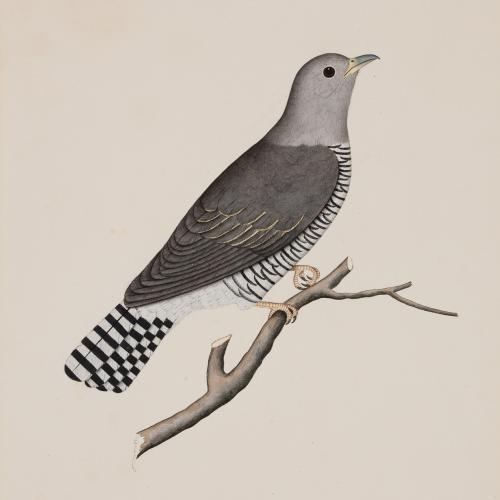
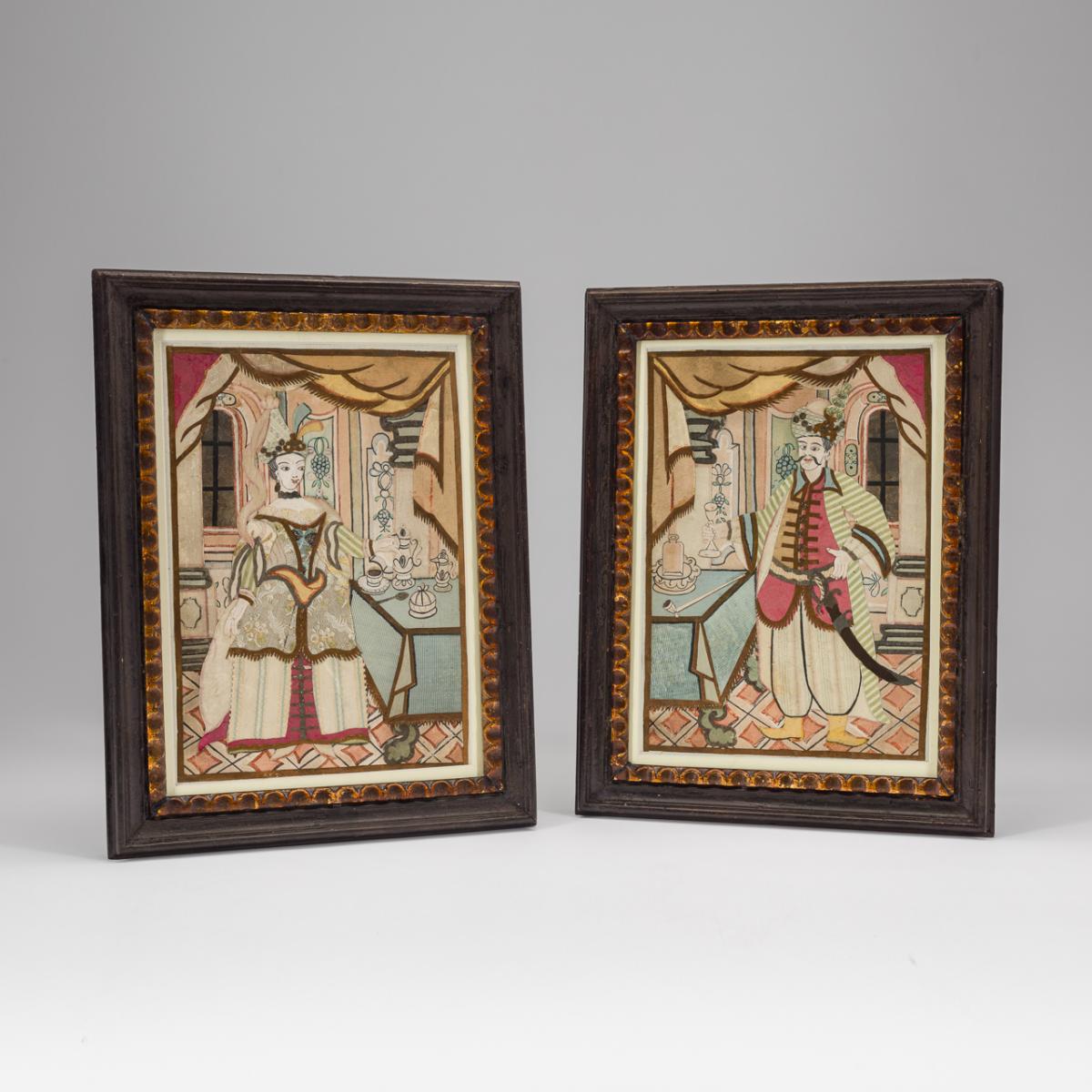
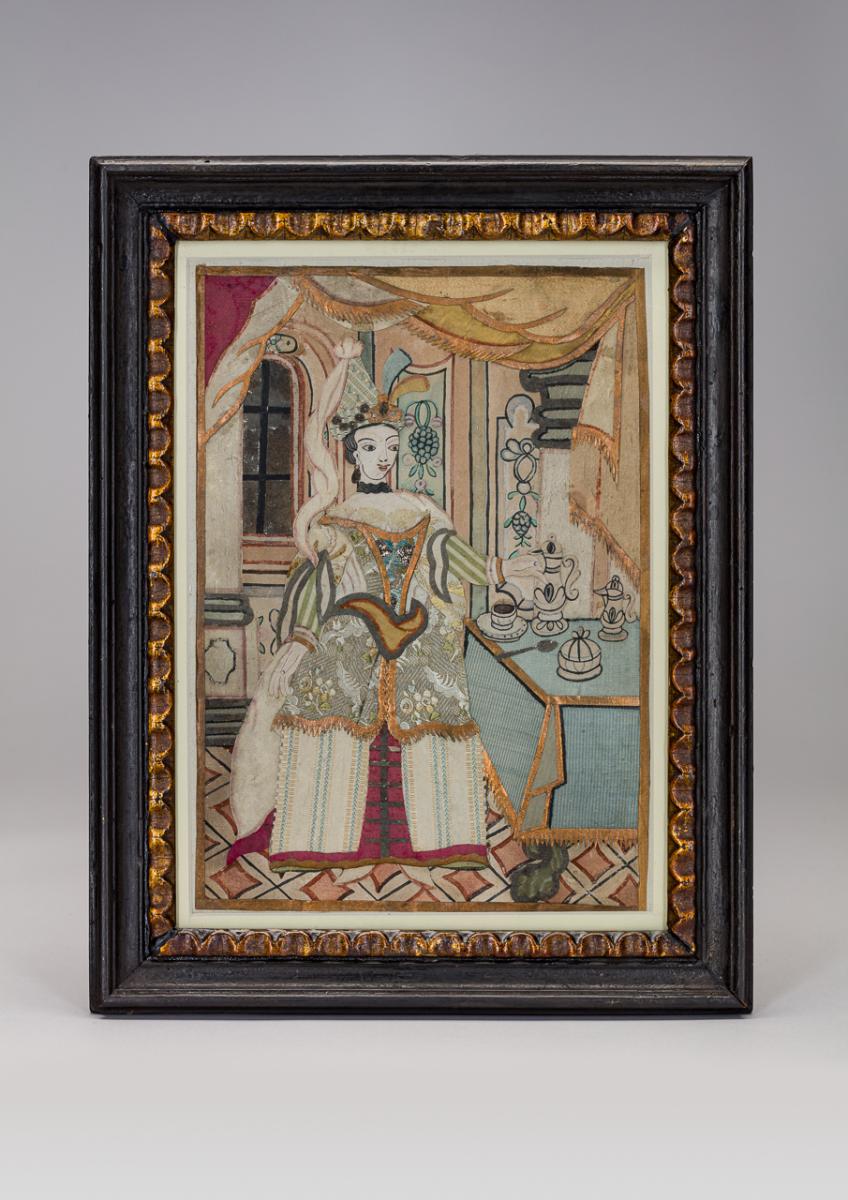
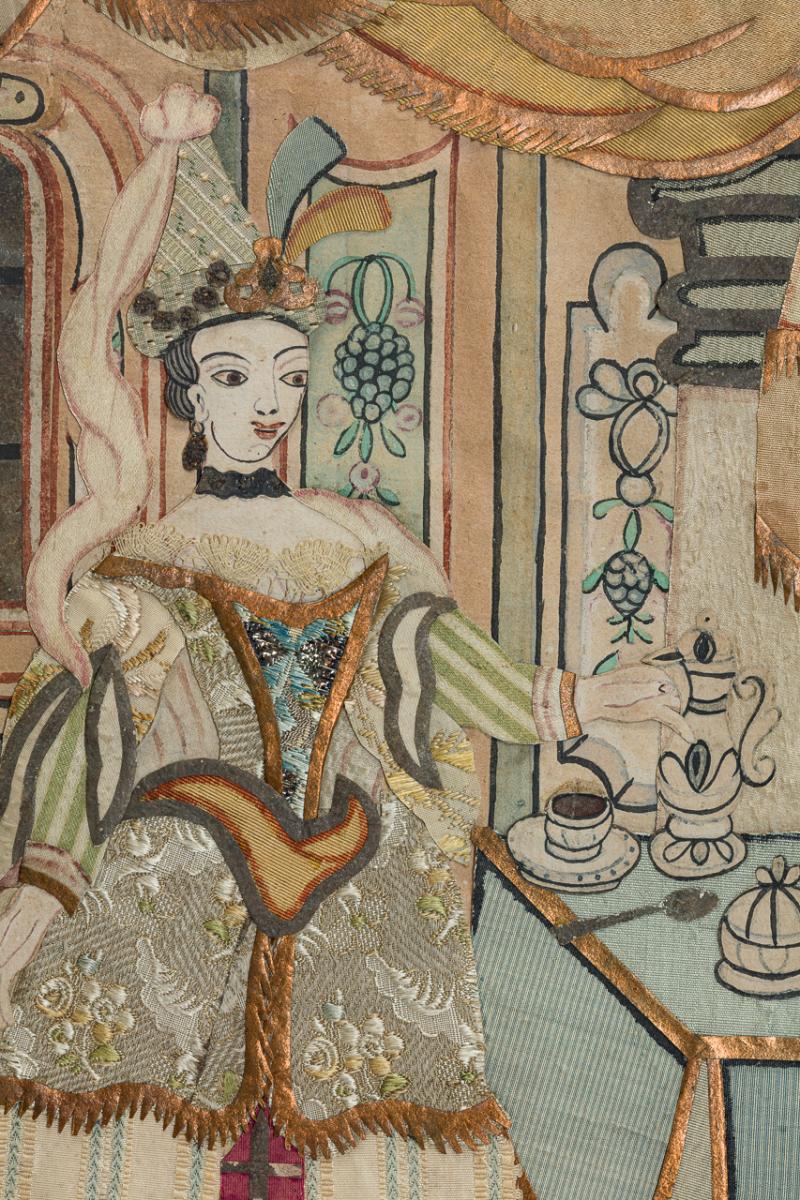
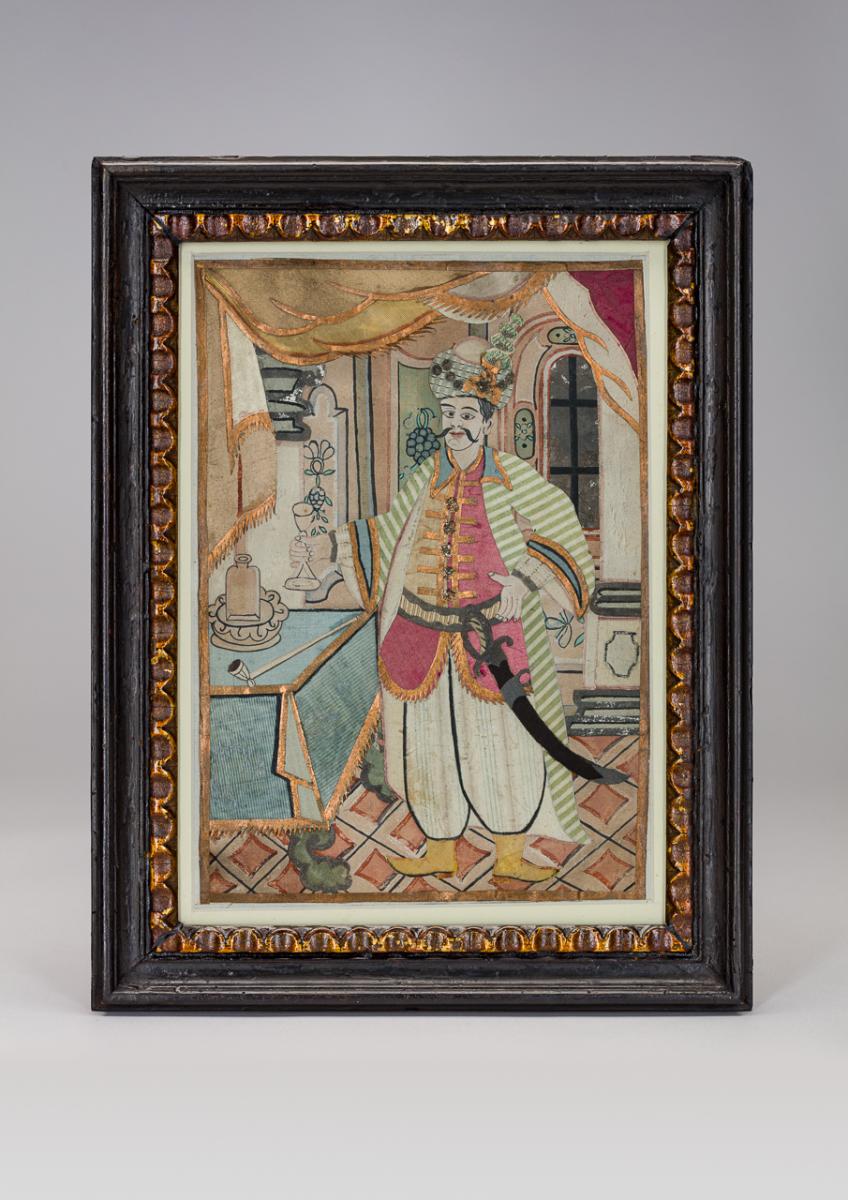
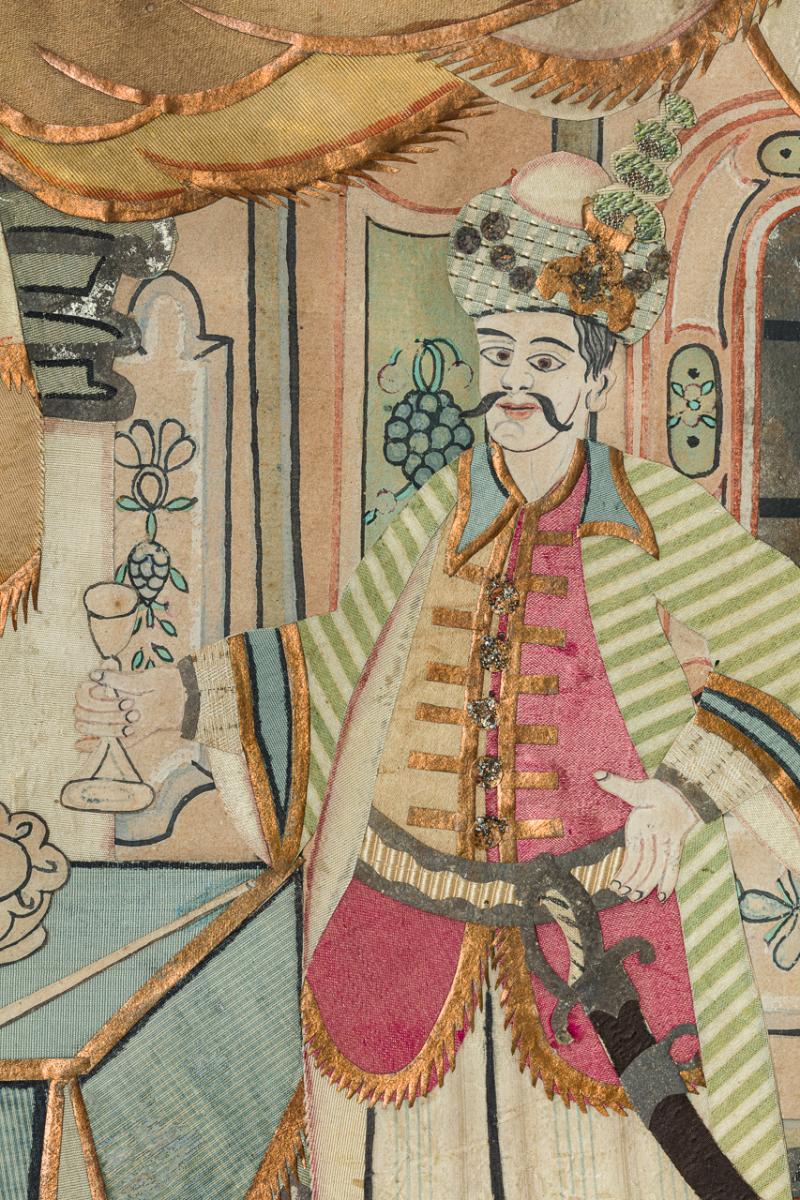
Price on application
This object is eligible for a Certificate of BADA Provenance
The BADA Standard
- Since 1918, BADA has been the leading association for the antiques and fine art trade
- Members are elected for their knowledge, integrity and quality of stock
- Our clients are protected by BADA’s code of conduct
- Our dealers’ membership is reviewed and renewed annually
- Bada.org is a non-profit site: clients deal directly with members and they pay no hidden fees
A Pair of Collages of a Sultan and Sultana.
Collages, the application of fragments of textile and paper to painted backgrounds, flourished as a form of folk art in the German-speaking world in the late 18th century. The surviving examples can be categorised into three broad themes: religious scenes, such as the scenes from the story of Abraham at the Metropolitan Museum of Art (accession nos 64.101.1393 and 64.101.1394); courtly life, such as the depiction of the wedding of Leopold II and Marie Louisa in Vienna at the British Museum (accession no. 2011,7060.1); and costume studies, like the study of a young girl in a dress at the Berlin Art Library (accession no. 14137111). This is a rare example of an orientalist subject in collage, lying beyond the usual purview of folk art. That these collages originate from the German-speaking world is confirmed by a barely decipherable inscription on the reverse of portrait of the woman, reading ‘auf Papier legen, in alte Sch.’ / ‘on paper, in an old …’ The final word is likely an abbreviation for the word ‘Schachtel’, an archaic word for a wooden frame. The handwriting is in Kurrentschrift, a script used in German-speaking countries from the late Middle Ages to the early 19th century.
The encroaching threat of the Ottoman Empire meant that European attitudes towards their 'Eastern' neighbours at the beginning of the Early Modern period were dominated by the so-called Türkenfurcht, or ‘fear of Turks’. However, the Habsburg Empire’s victories over the Ottoman Empire, namely the Siege of Vienna in 1683 and the Victory of Belgrade in 1717, diminished the image of the omnipotent Turk. Instead, an image of a Turkish ‘Other’, a form of Orientalism known as turquerie, arose.1 The Ottomans were seen as exotic neighbours, to be studied and admired, rather than enemies to be feared. 17th and 18th century Austrian School paintings of Turkish subjects highlight the luxurious fabrics and rich colours in the Ottoman court. A Scene from the Turkish Harem, an oil painting by Franz Hermann, Hans Gemminger, and Valentin Müller from the 17th century, depicts intricately decorated rugs and textiles. The addition of silk, lace, tulle, and brocade to this pair of collages only serves to enhance the tactile experience.
This Sultan and Sultana bear a striking resemblance to Mehmed IV and his Haseki Sultan (chief consort), Gülnuş Sultan. Mehmed IV reigned from 1648 to 1687, making him the second-longest-reigning sultan in Ottoman history. His forces were defeated by the Holy League at the Battle of Vienna in 1683. He was almost always depicted wearing a turban and a military coat brocade fastenings, such as the copperplate engraving in a leaflet of 1683 held at the Wien Museum (accession no. 16153, figure on the right), and the Austrian portrait in the Wien Museum (accession no. 103949). Gülnuş Sultan is often illustrated wearing conical headdresses and rich costume (see British Museum accession no. 1982,U.3005).
Although the collage-maker may have worked from a woodcut or engraving, few artists would have had the opportunity to draw the Sultan from life. Furthermore, no men, apart from husbands or close family, were permitted to see the uncovered faces of women in the Sultan’s harem.2 Both the face of the Sultan and his consort are therefore fabricated, the thick eyebrows, bulging almond eyes, exaggerated moustache merely a caricature of the exotic ‘Other’. The woman’s corseted waist, scooped neckline, and petticoat, belong to Western European fashion of the 17th century. Both rooms, which are mirror images of each other, are populated with items with which Westerners would have been familiar. Atop the Sultan’s table is an elongated tobacco pipe, of the type commonly seen on the canvases of orientalist artists such as D. Lynch at the Wellcome Collection (accession no. 25462i). The woman stands beside a table holding coffee-making paraphernalia, which matches the form of the 18th century Meissen ceramics for the Turkish market.3
n.b. accession nos are clickable links
1 Theilig, Stephen. ‘Guerres et guerriers dans l’iconographie et les arts plastiques XVe – XXe siècles’, Cahiers de la Méditerranée 83 (2011), 61-68.
2 Madar, Heather, ‘Before the Odalisque: Renaissance Representations of Elite Ottoman Women’, Early Modern Women 6 (2011), 1-41; 24.
3 King, Rachel. ‘What’s in a name? The trouble with Türkenbecher & European trade ceramics’, The French Porcelain Society (3 July 2020), retrieved online https://www.thefrenchporcelainsociety.com/news/whats-name-trouble-turkenbecher-european-trade-ceramics/
The BADA Standard
- Since 1918, BADA has been the leading association for the antiques and fine art trade
- Members are elected for their knowledge, integrity and quality of stock
- Our clients are protected by BADA’s code of conduct
- Our dealers’ membership is reviewed and renewed annually
- Bada.org is a non-profit site: clients deal directly with members and they pay no hidden fees


